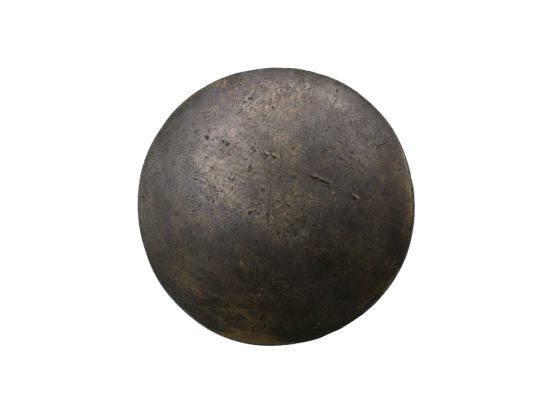Premium Recommendation - Xisheng Guizi Bronze Mirror
在中国传统的吉祥物中,铜镜一直被视为驱邪避凶、招财进宝的神秘物品。而在众多的铜镜中,喜生贵子铜镜更是以其独特的寓意和精美的工艺,成为了人们祈求子孙满堂、家庭和睦的象征。
In traditional Chinese mascots, bronze mirrors have always been regarded as mysterious items for warding off evil and attracting wealth and treasures. Among the numerous copper mirrors, the Xisheng Guizi copper mirror has become a symbol of people's prayers for a family full of descendants and harmony due to its unique symbolism and exquisite craftsmanship.
铜镜是我国古代常见的日常用具,目前考古发现中国最早的铜镜出现于距今4000年左右的齐家文化时期,一直延续使用至清代。镜虽微物,却承大道。古代铜镜中蕴藏着应时而变的审美情趣、道德伦理以及宗教情怀,既有以天圆地方、四神八卦、十二地支等为内容的宇宙观,涵括日月山川、花草树木、飞禽走兽、游鱼虫蝶的万物皆有灵的自然观,也有以福禄寿喜、姻缘爱情、吉祥平安为追求的人生观。
Copper mirrors were common daily utensils in ancient China. Archaeological discoveries have shown that the earliest copper mirrors in China appeared around 4000 years ago during the Qijia Culture period and continued to be used until the Qing Dynasty. Although a mirror is a small object, it carries the great way. The ancient bronze mirror contains a constantly changing aesthetic taste, moral ethics, and religious sentiments. It includes a cosmology that revolves around the round sky and the earth, the four gods and eight trigrams, and the twelve earthly branches. It also includes a natural view that all things have spirits, such as the sun, moon, mountains, rivers, flowers, plants, birds, animals, fish, insects, and butterflies. There is also a life philosophy that pursues happiness, happiness, marriage, love, and good luck and peace.
在中国古代,喜生贵子铜镜被视为一种神圣的物品,不仅用于家庭装饰,还用于祭祀、祈福等重要场合。在民间,喜生贵子铜镜更是被赋予了神奇的力量,被认为是能够保佑子孙繁衍、家庭和睦的吉祥物。
In ancient China, copper mirrors were regarded as a sacred item, not only used for home decoration, but also for important occasions such as worship and prayer. In the folk, the copper mirror that brings good birth to a noble son is endowed with magical power and is considered a mascot that can bless the reproduction of future generations and the harmony of families.
铜镜一般制成圆形或方形,其背面有铸铭文饰图案,并陪钮以穿系,正面则以铅锡磨听光亮,可清晰照面。商、西周和春秋时的铜镜,都有零星发现,战国始盛行,产量大增。到汉代,由于日常生活的大量需求,加之西汉中叶后经济飞速繁荣,铜镜制作产生了质的飞跃。汉代所制铜镜工艺精良,质地厚重,镜背铭文、图案丰富多样。后经唐宋时代两次发展高峰,到明清时期随着近代玻璃的诞生,铜镜才逐渐淡出历史舞台。
Copper mirrors are generally made into circular or square shapes, with engraved decorative patterns on the back and buttons for wearing. The front is polished with lead and tin to provide clear illumination. Copper mirrors from the Shang, Western Zhou, and Spring and Autumn periods were found sporadically, with a significant increase in production during the Warring States period. In the Han Dynasty, due to the high demand for daily life and the rapid economic prosperity after the mid Western Han Dynasty, the production of bronze mirrors underwent a qualitative leap. The copper mirrors made in the Han Dynasty have excellent craftsmanship, thick and heavy texture, and rich and diverse inscriptions and patterns on the back of the mirrors. After two peaks of development during the Tang and Song dynasties, it was not until the Ming and Qing dynasties that bronze mirrors gradually faded out of the historical stage with the birth of modern glass.

铜镜兼具极高的美学价值,由于古代的提炼技术的限制,打造铜镜的材料为较高含量锡的青铜,比较昂贵,使得在中上层阶级和富裕人家比较流行。再加上女为悦已者容,对女性来说铜镜是生活中的必须品,其的外表越具有观赏性越受她们喜爱,故铜镜的美学价值也愈来愈高。另外,每个时期的铜镜工艺水平在发展提高,不断的完善当中,因而铜镜还代表着历朝历代的审美特点和社会思想,铜镜也具有装饰品的效果。铜镜制作精良,形态美观,图纹华丽,铭文丰富,是十分精美的工艺品,具有很高的美学价值,更是我国古代文化遗产的瑰宝。
Copper mirrors have extremely high aesthetic value. Due to the limitations of ancient refining techniques, the material used to create copper mirrors is bronze with a higher content of tin, which is relatively expensive, making it popular among the upper middle class and wealthy families. In addition, for women, the appearance of bronze mirrors is essential in their daily lives, and the more ornamental their appearance is, the more they are loved by them. Therefore, the aesthetic value of bronze mirrors is also increasing. In addition, the level of bronze mirror craftsmanship in each period is constantly developing and improving, so bronze mirrors also represent the aesthetic characteristics and social thoughts of various dynasties, and they also have the effect of decoration. Copper mirrors are exquisitely crafted, with beautiful shapes, gorgeous patterns, and rich inscriptions. They are exquisite handicrafts with high aesthetic value and are also treasures of ancient Chinese cultural heritage.
铜镜还具有很高的文化价值,铜镜是古代人民日常生活中不可或缺的器具,承载着宗教信仰、美好祝愿等诸多寓意,也频繁出现在诗词歌赋、传奇话本等历代文学作品中,产生了广为流传的破镜重圆、以人为镜等典故或故事,使得铜镜成为了一种无法替代的文学意象,并形成一种“镜鉴文化”。几千年里,铜镜默默凝视了太多风景,人们内心的祈求、时代的风貌也凝结在了小小的铜镜中。
Copper mirrors also have high cultural value. They were an indispensable tool in the daily lives of ancient people, carrying many meanings such as religious beliefs and good wishes. They frequently appeared in literary works such as poetry, songs, and legendary stories, giving rise to widely circulated allusions or stories such as the reunion of broken mirrors and the portrayal of people as mirrors, making them an irreplaceable literary image and forming a "mirror learning culture". For thousands of years, copper mirrors have silently gazed at too many landscapes, and people's inner prayers and the style of the times have also condensed into small copper mirrors.
明清之际的工艺品纹饰讲究“有图必有意,有意必吉祥”。这枚“喜生贵子”铜镜重约529.2g,为明代流传至今,镜圆形,圆钮,背面四个方框刻“喜生贵子”,字体挺拔有力,字口简洁清晰。铜镜通身打磨精细,质感厚重,精致古朴,可谓巧夺天工。这面铜镜“早生贵子”为名,有明显的祈祝早日喜得贵子之意,是古代社会世俗心理的艺术反映,从古铜镜中,可见古人对美好生活的向往。
During the Ming and Qing dynasties, the decorative patterns of handicrafts emphasized that "if there is a picture, it must be intentional, and if intentional, it must be auspicious.". This "Xi Sheng Gui Zi" bronze mirror weighs about 529.2g and has been passed down from the Ming Dynasty to the present day. The mirror is circular in shape, with a round button and four square engraved "Xi Sheng Gui Zi" on the back. The font is upright and powerful, and the mouth is concise and clear. The copper mirror is finely polished throughout, with a heavy texture and exquisite antiquity, making it a masterpiece of craftsmanship. This bronze mirror, named "giving birth to a noble son early", has a clear meaning of praying for the birth of a noble son as soon as possible. It is an artistic reflection of the secular psychology of ancient society. From the ancient bronze mirror, it can be seen that ancient people yearned for a better life.
总的来说,古代铜镜的美学价值和其本身的美观形态和工匠的工艺雕刻技术有关,尤其是铜镜代表美学和文化意义,更让铜镜愈发的受到人们的喜爱。其蕴含着时代特征和审美,不仅使铜镜成为了一件精美的装饰品,还是一件可以见证历史兴衰的宝物。喜生贵子铜镜作为一种具有悠久历史和丰富文化内涵的艺术品,不仅具有很高的收藏价值和鉴赏价值,更是人们祈求家庭幸福、喜得贵子的美好祝愿,具有极高的收藏价值。
Overall, the aesthetic value of ancient bronze mirrors is related to their aesthetic form and the craftsmanship and carving techniques of craftsmen. Especially, bronze mirrors represent aesthetic and cultural significance, making them increasingly popular among people. It embodies the characteristics and aesthetics of the times, making bronze mirrors not only exquisite decorations, but also a treasure that can witness the rise and fall of history. As an art piece with a long history and rich cultural connotations, the Xisheng Guizi bronze mirror not only has high collection and appreciation value, but also is a beautiful wish for people to pray for family happiness and the birth of a noble son, with extremely high collection value.

欢迎咨询成都榆沐霖文化传播有限公司
Welcome to consult Chengdu Yumulin Cultural Communication Co., Ltd
2023年11月30日
November 30, 2023




